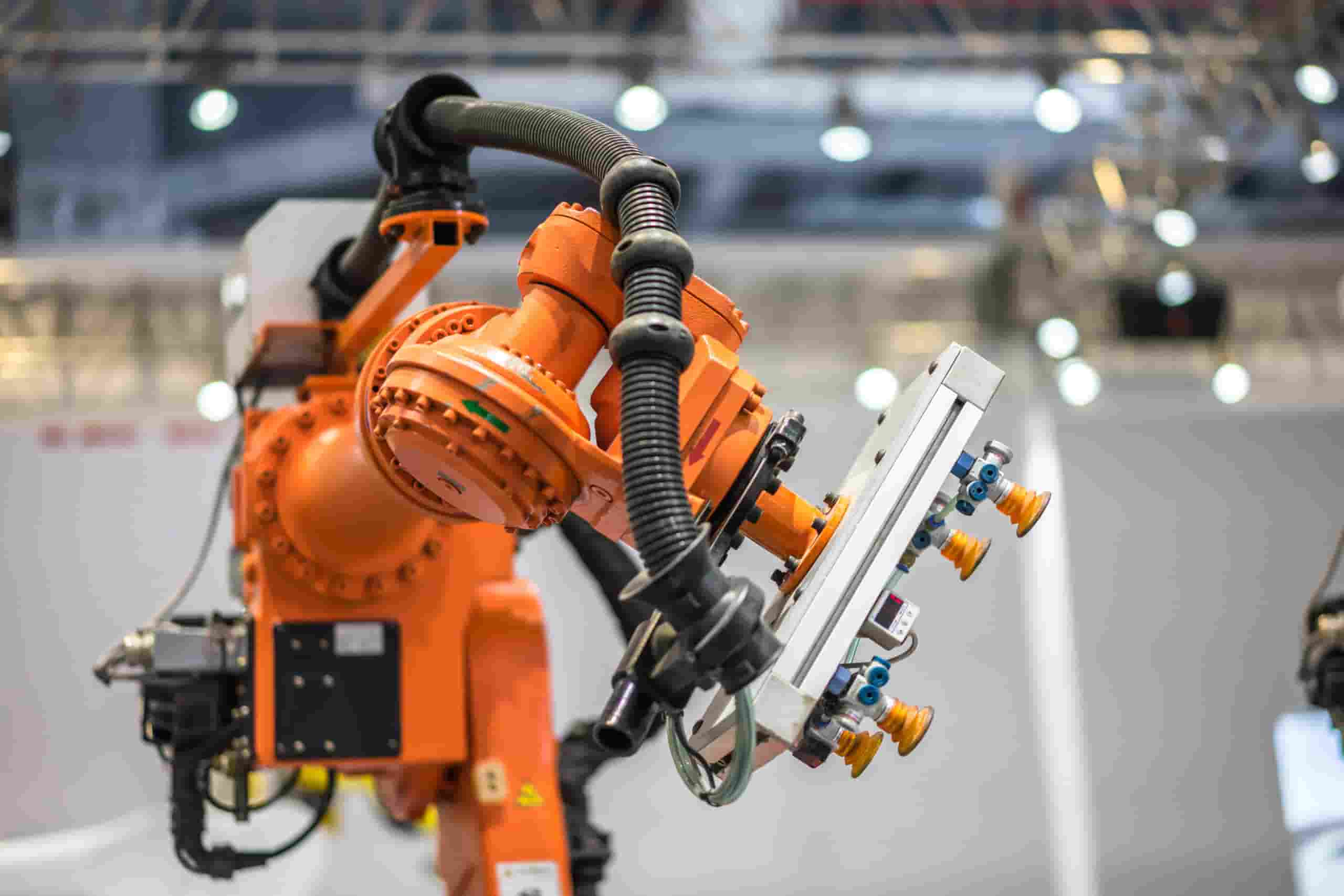This project team built on the outputs from a previously funded ARM Institute project, resulting in a 56% reduction in rework paths and a 37% reduction in overall number of compaction paths. The project’s impact has wide applications across platforms that include exhaust ducts, radomes, aeroshell thermal protection systems, and wing control surfaces.
Project Team
Boeing (Principal Investigator), University of Southern California, 3M
Problem Statement
Future commercial and defense platforms will need to operate at temperatures above 1600F, exceeding temperature limits for most metals. Oxide ceramic matrix composite (Ox CMC) offers higher temperature capability than metals (up to 2400F) with a density similar to Aluminum, and Ox CMCs are lower cost than non Ox CMCs. However, the current baseline fabrication method for oxide CMCs is hand layup, which has a longer cycle time for part fabrication and could limit opportunities for high-rate production needs. Consistent, cost-effective manufacturing methods and faster cycle times for CMCs are essential enablers to meet high-rate production needs for high-temperature applications.
This project sought to address these limitations through the development of an automated, robotic pick, place, and form system, centering on the following objectives:
- Reducing the cost of high temperature components for hypersonic vehicles, and other high temperature applications
-
Developing higher levels of automation for processing CMC components
-
Reducing the technology gap of using automated pick and place processes for fabric-based CMC
Technical Approach
The team developed a robotic system for the automated manufacturing of fabric-based ceramic matrix composites (CMCs). The system includes fully automated sheet pick and place, as well as removal of protective backing film from both sides of the composite sheet, online detection of uncompacted regions during layup, and adaptive robotic replanning to correct these regions.
This approach ensures consistent quality and high efficiency, improving robustness and repeatability in composite manufacturing processes. The work highlights advances in robotic automation for high-performance composite fabrication, which is relevant across industries.
Impact
The developed system was tested on select, challenging plies that had a large number of uncompacted regions on the previous demonstration article. In testing, the adaptive path planning demonstrated a 37% average reduction in overall number of compaction paths and a 56% average reduction in rework paths
This project has wide applicability across commercial and defense platforms, including exhaust ducts, radomes, aeroshell thermal protection systems, and wing control surfaces. The deliverables further improves the performance and quality of CMC components using automation, enabling lower production cost while addressing the high-rate production needs and opening the door to broader use for other materials.
Project Outputs Available to ARM Members
ARM Institute projects result in consortium-developed intellectual property (CDIP) that is available for use by ARM Institute Members and the Department of Defense.
Specific outputs available to ARM Members from this project include:
- Software for importing ply models and selecting compaction strategy
- Software for generating robot trajectories with an interface for visualization and collision checking
- Software for detecting ply un-compacted regions and ply placement location and generating rework paths
- Software for generating adaptive paths based on a learning model
- Software for inspecting for fiber orientation
- Pick and place cell architecture and layout
ARM Members can learn more and access project outputs in the ARM Member Community. Email [email protected] for assistance using the Community.
Collaborate to Strengthen US Manufacturing
ARM Institute Members lead the way to a future where people and robots work together to respond to our nation’s greatest challenges and to develop and produce the world’s most desired products. By becoming a member of our 450+ member organization consortium, you’ll join thousands of subject matter experts in building the future of US manufacturing through robotics, AI, and workforce innovations. Your membership unlocks not only access to member-exclusive events and webinars, including our Annual Member Meeting, but also project funding opportunities, project outputs, networking, a digital platform for collaboration, and more.
Explore membership here or email us at [email protected] to learn how you can contribute to this work.
Get started
ABOUT THE ARM INSTITUTE
The Advanced Robotics for Manufacturing (ARM) Institute is a Manufacturing Innovation Institute (MII) funded by the Office of the Secretary of Defense under Agreement Number W911NF-17-3-0004 and is part of the Manufacturing USA® network. The ARM Institute leverages a unique, robust, and diverse consortium of 450+ members and partners across industry, academia, and government to make robotics, autonomy, and artificial intelligence more accessible to U.S. manufacturers large and small, train and empower the manufacturing workforce, strengthen our economy and global competitiveness, and elevate national security and resilience. Based in Pittsburgh, PA since 2017, the ARM Institute is leading the way to a future where people & robots work together to respond to our nation’s greatest challenges and to produce the world’s most desired products. For more information, visit www.arminstitute.org and follow the ARM Institute on LinkedIn and X (formerly Twitter).
